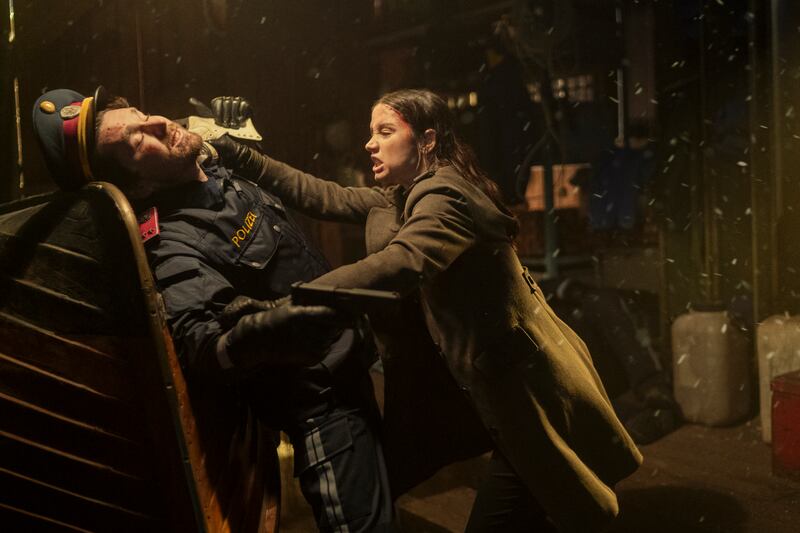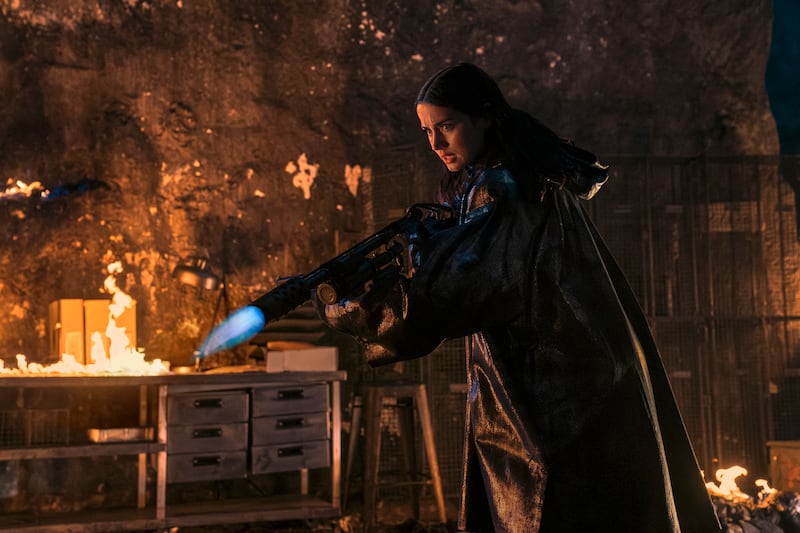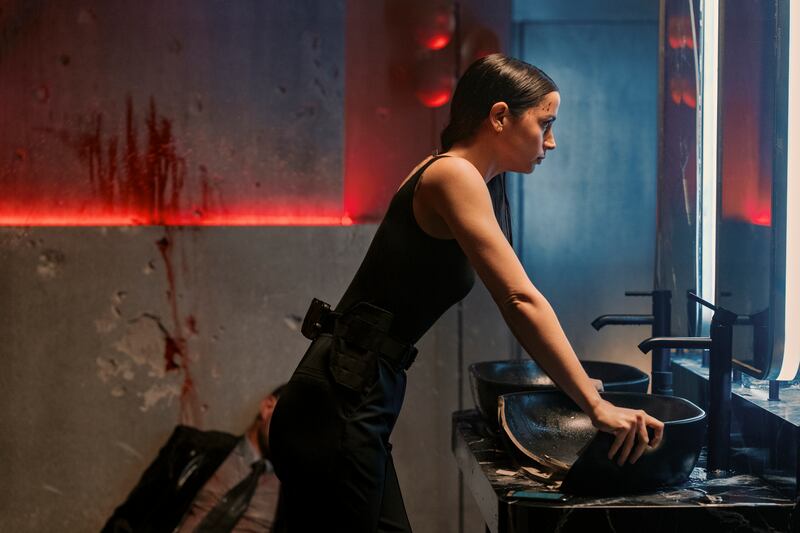Standing out as the first John Wick spin-off film is an unenviable challenge on paper—especially given the series’ hyper-stylization and unwavering association with Keanu Reeves, its beloved leading man. But in a single fight scene, Ballerina, a standalone story tucked around the events of John Wick: Chapter 3, makes the assignment look breezy just by breaking a stack of plates for laughs.
Eve (Ana de Armas), the film’s Wick surrogate and likewise a member of the Ruska Roma crime family, makes her way to a hinterland village in the Czech Republic, on the latest leg of her lifelong journey to find the man responsible for executing her father (David Castañeda) in her girlhood.
We witness this particular cruelty in Ballerina’s past tense opening sequence. In the present, Eve has little information to go on for tracking her quarry, but it’s a moot point: a stop at the local rustically charming tavern turns into a firefight when a squad of locals descends on Eve’s position.
Everyone in this snowy hamlet, it seems, is a trained killer.
Eve makes quick work of them, of course, including the waitress; the two play a barbaric version of a shell game in an equally barbaric riff on Buster Keaton skits and Jackie Chan films, with each smashing porcelain dinnerware over the other’s head in turn while frantically looking for Eve’s gun.

Which plate the sidearm happens to be under is besides the point. In fact, audiences may find themselves hoping the gun stays missing, so that the rest of the brawl continues with bowls and mugs, possibly a platter or two, maybe a cutting board. Baked into that desperate use of improvised weaponry is joyful slapstick, a secondary note to Ballerina’s savage, overclocked mayhem.
What feels like 80 of the film’s 125 minutes is made up of action scenes. That’s what we’re here for, of course, but it’s nice to see a John Wick movie’s version of a pie fight all the same; it helps mellow out Ballerina’s surplus of fisticuffs and shootouts, which verge on excessive.
Singlehandedly, the tavern sequence injects the film with a personality all its own, giving it distinction from the umbrella franchise while avoiding alienation. Take this as an object lesson in how to marry spin-off productions to their progenitors, as well as how to immediately divorce them.
The effect of the tavern sequence is fleeting. For as long as the fight endures, from one floor to the next before spilling out into wintry streets, Ballerina expresses individuality through black comic brutality. Once the sequence ends, though, and the narrative circles back to dead dads, death cults, and Reeves, who plays a far more significant role here than expected, considering that de Armas is the star on the marquee, Ballerina reconstitutes as “just another Wick movie.”

If this sounds like your kind of good time, no worries; director Len Wiseman and writer Shay Hatten, who co-authored the screenplays on the last two Wick pictures, are happy to serve more of the same, sans Reeve’s physical dynamism, replaced with de Armas’ stiff monotony.
Amplifying the routine Ballerina submits to is that an hour goes by before Eve travels to Czechia, a stretch of storytelling jammed with plot by Hatten.
Eve’s decision to track the Chancellor (Gabriel Byrne), her father’s murderer, violates orders given to her by Ruska Roma’s director (Anjelica Huston). While on her mission of personal vengeance, Eve runs into Daniel Pine (Norman Reedus), a man on the run from the Chancellor with his daughter, Ella (Ava Joyce McCarthy), and becomes her secondary protector. John himself appears to advise Eve on the matter of choice, encouraging her to decide if the life of a Ruska Roma assassin is the life she wants to live–the standard issue stuff of existential hitman cinema.
To Hatten and Wiseman’s credit, none of Ballerina’s first half is warying; they pepper these character moments with spent bullet casings and finely choreographed beatings, all performed with the franchise’s trademark acrobatic flair. It’s hard to make a movie in John Wick’s universe that’s boring. (Television, judging by Peacock’s The Continental, is another thing entirely.) But it’s also important for ancillary projects within that universe to have a sense of self, unique from but related to the primary films, lest they be rendered prosaic, and thus counter to the spirit of the original John Wick.

That movie was, and frankly still is, a miracle in studio action filmmaking, whose impact is still felt more than a decade on. Imagining contemporary action cinema, whether American or international, without John Wick and its sequels, is impossible. Chad Stahelski’s slick, human creation represents a tectonic shift for both the genre and the industry alike, and while it’s not at all fair to demand that Ballerina match that reputation, it is reasonable to expect a distinguishing effort.
“From the World of John Wick,” reads the title in the film’s marketing material, after all. In fairness to Wiseman and Hatten, Ballerina leaves the viewer no doubt about the world it belongs to; roping in Reeves helps, though it’s the prevailing vibe of “cool” and “lux” that does the heavier lifting.
At the same time, though, save for that violently silly tavern fight, the film never develops a cohesive identity within that world beyond “lady John Wick.” Charlize Theron and David Leitch already did that in 2017 with Atomic Blonde, but that was a John Wick riff rather than a John Wick spin-off. Ballerina bears a greater burden. Wiseman, Hatten, and de Armas can’t carry it.









